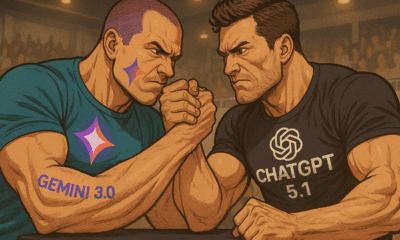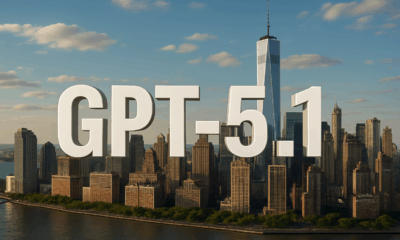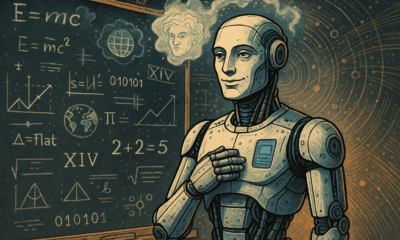AI Model
ChatGPT 5: The Most Capable AI Model Yet
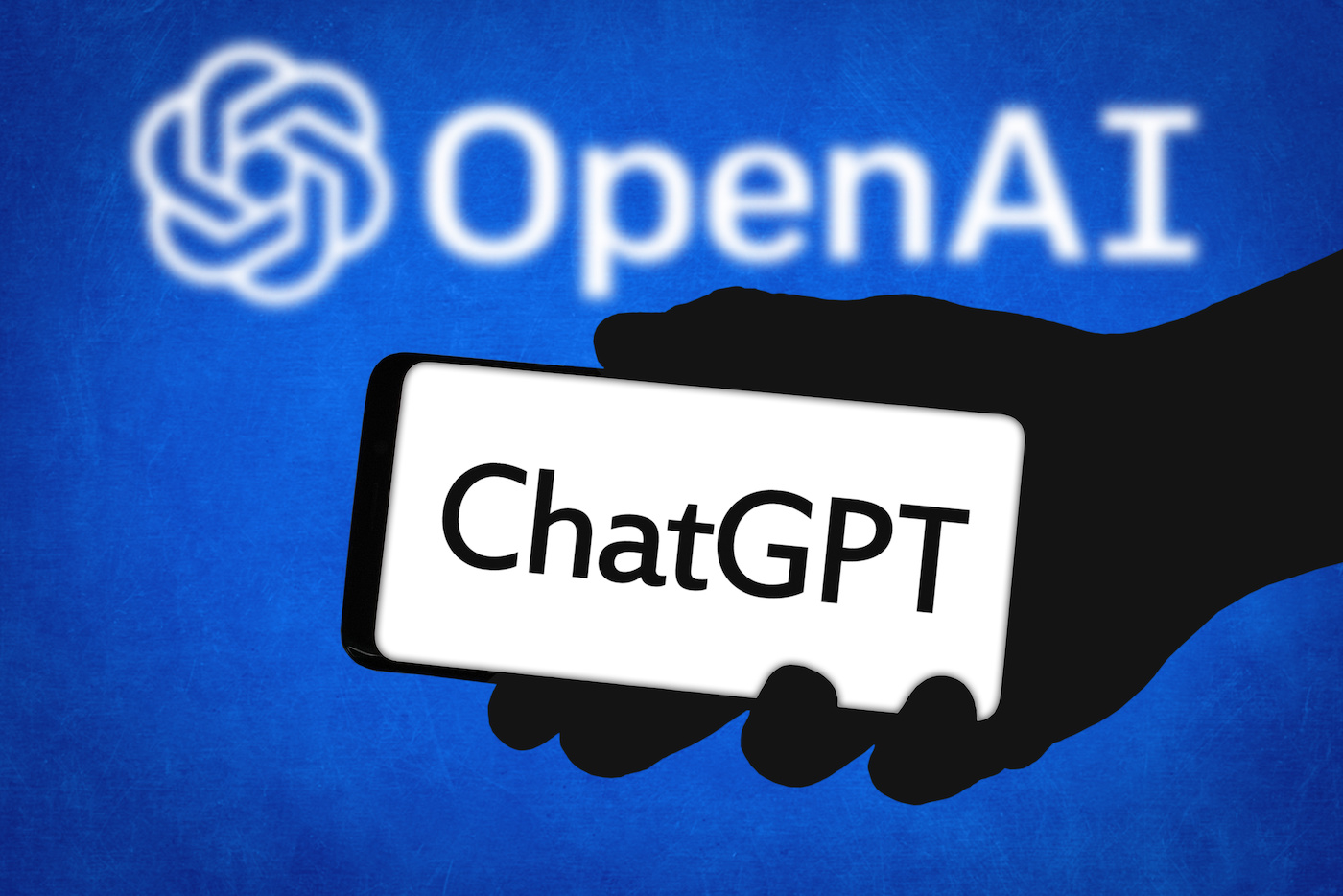
- Share
- Tweet /data/web/virtuals/375883/virtual/www/domains/spaisee.com/wp-content/plugins/mvp-social-buttons/mvp-social-buttons.php on line 63
https://spaisee.com/wp-content/uploads/2025/07/chatgpt2-1000x600.jpeg&description=ChatGPT 5: The Most Capable AI Model Yet', 'pinterestShare', 'width=750,height=350'); return false;" title="Pin This Post">
When OpenAI first announced ChatGPT 5, the AI community was already buzzing with rumors. Speculation ranged from modest incremental changes to bold claims about a “general intelligence leap.” Now that the model is out in the world, we can see that while it’s not a conscious being, it does mark one of the most significant advances in consumer AI to date. With faster reasoning, improved multimodality, and tighter integration into the broader OpenAI ecosystem, ChatGPT 5 is poised to redefine how people interact with artificial intelligence.
This isn’t just a model update; it’s a step toward making AI assistants far more capable, reliable, and context-aware. And unlike some flashy AI releases that fizzle after the initial hype, ChatGPT 5 has substance to match the headlines.
Who Can Use ChatGPT 5 Right Now
At launch, ChatGPT 5 is being offered to two main groups: ChatGPT Plus subscribers and enterprise customers. The Plus subscription, which is the same paid tier that previously offered access to GPT-4, now includes GPT-5 without an extra cost. That means anyone willing to pay the monthly fee gets priority access to the new model, along with faster response speeds and higher usage limits compared to free-tier users.
Enterprise customers, many of whom already integrate GPT models into workflows ranging from customer service chatbots to data analysis tools, are receiving enhanced versions with extended capabilities. For example, companies can deploy GPT-5 in a more privacy-controlled environment, with data retention policies tailored to sensitive industries like healthcare and finance.
The free tier is not being left behind forever, but OpenAI is rolling out access gradually. This phased approach is partly a matter of managing infrastructure demands and partly about making sure the model’s advanced features are stable before giving them to millions of casual users at once.
For developers, GPT-5 is available through the OpenAI API, with different pricing tiers depending on usage. This opens the door for an explosion of GPT-5-powered applications, from productivity assistants embedded in office software to creative tools for artists, educators, and researchers.
How ChatGPT 5 Improves on Previous Versions
When OpenAI moved from GPT-3.5 to GPT-4, the jump was noticeable but not revolutionary. GPT-4 could follow more complex instructions, produce more nuanced text, and handle images in some limited ways. With GPT-5, the leap is more dramatic.
The most obvious change is in reasoning depth. GPT-5 can maintain and manipulate more steps of logic in a single exchange. Complex questions that used to require multiple clarifications can now often be answered in one go. For example, if you ask it to plan a multi-week project that has dependencies between tasks, it can produce a coherent timeline while factoring in resource constraints, risks, and contingency plans.
Another significant improvement is memory and context handling. Conversations with GPT-5 can stretch further without the model “forgetting” key details from earlier in the discussion. That makes it much easier to hold a multi-day conversation where the AI remembers not just the facts you gave it, but the tone, preferences, and constraints you’ve established.
Multimodal capabilities have also been refined. GPT-5 can interpret images with greater accuracy and handle more complex visual reasoning tasks. Show it a photograph of a mechanical part, and it can identify components, suggest likely functions, and even flag potential defects if the image quality allows.
The speed improvement is not merely about faster typing on the screen. GPT-5’s underlying architecture allows it to generate coherent responses more quickly while also being better at staying “on track” with your request, avoiding tangents or half-completed answers that sometimes plagued earlier models.
Finally, GPT-5 feels more naturally conversational. Where GPT-4 could sometimes produce slightly stiff or repetitive phrasing, GPT-5 adapts more fluidly to the user’s tone. If you want a crisp, professional explanation for a report, it can deliver that. If you want something playful and imaginative, it will lean into that style without sounding forced.
Measuring GPT-5 Against the Competition
The AI assistant market is now crowded with serious contenders. Anthropic’s Claude has been praised for its clarity and reasoning ability. Google’s Gemini models integrate deeply with Google’s search and productivity tools. Open-source alternatives like Mistral are gaining traction for their flexibility and cost efficiency.
Against this backdrop, GPT-5’s strength is that it doesn’t specialize too narrowly. Gemini excels when working inside Google’s ecosystem; Claude shines in producing concise, precise responses with a human-like “polish.” But GPT-5 is a generalist in the best sense. It can pivot from writing a detailed legal brief to crafting a marketing storyboard to debugging complex code — all without requiring a switch in models or modes.
In terms of raw multimodal capability, GPT-5’s seamless handling of text, images, and — for early testers — short video clips puts it slightly ahead of most competitors. While other models can generate images or work with visuals, GPT-5 integrates these functions directly into the flow of conversation. You can, for example, show it a photo of a street scene, ask it to generate a written story based on that scene, and then have it produce an illustration inspired by its own text.
Where GPT-5 still faces competition is in highly specialized domains. Claude remains strong in summarizing large, complex documents without losing nuance, and some open-source models fine-tuned for coding can outperform GPT-5 on narrow programming tasks. But for most users, the combination of breadth, reliability, and ease of use makes GPT-5 the most versatile option currently available.
What GPT-5 Excels At in Practice
The true test of an AI model is not in its benchmark scores but in the day-to-day experience of using it. Here, GPT-5’s improvements translate into tangible benefits.
For research tasks, GPT-5 can digest long and technical source material, then present the information in multiple layers of detail — from a quick two-paragraph overview to a highly structured outline with references and key terms. This makes it a valuable tool for academics, journalists, and analysts who need both speed and accuracy.
Creative professionals are likely to appreciate its ability to generate richer narratives and more convincing dialogue. GPT-5’s storytelling feels less mechanical and more adaptable to the intended audience, whether that’s a light-hearted children’s book or a moody, atmospheric short story.
Problem-solving is another area where GPT-5 stands out. In mathematics, it is better at breaking down complex word problems into steps that humans can follow, rather than jumping straight to the answer. In coding, it is less prone to generating non-functional code and more willing to explain why certain approaches might fail before you try them.
And for collaborative work — whether that’s planning an event, outlining a business proposal, or mapping out a startup’s roadmap — GPT-5 behaves more like a competent partner than a passive tool. It asks clarifying questions, flags potential oversights, and can even maintain parallel “tracks” of a conversation so you can switch between related topics without losing the thread.
The New Era of Image and Video Generation
GPT-5’s upgraded multimodality deserves its own discussion. Image generation now feels integrated, rather than bolted on. The model can produce photorealistic images that maintain consistent character appearances across multiple outputs, a long-standing challenge in AI art. It can also generate text within images with far fewer spelling errors or distortions than earlier systems.
For video, GPT-5 currently supports the creation of short, coherent clips. While still in beta and limited to select users, the early results suggest a future where a user could storyboard an idea entirely in natural language and have the AI generate matching visuals. These videos are not yet Hollywood-ready — frame-to-frame consistency still has room to improve — but they represent a meaningful step toward AI-assisted filmmaking and dynamic media creation.
Importantly, OpenAI has implemented stronger safeguards around visual outputs, with clearer policies on restricted content and improved detection of harmful or misleading media. This is a reflection of lessons learned from earlier generations, where misuse of AI-generated visuals became a significant public concern.
GPT-5 and the Rise of Agent Mode
Agent Mode is one of the most intriguing concepts in modern AI development, and GPT-5 is at the heart of OpenAI’s push in this direction. In traditional use, ChatGPT waits for the user to issue a prompt and then responds. In Agent Mode, the model can be given broader objectives and the freedom to take steps toward achieving them, including using external tools and APIs.
Imagine you want to plan a complex business trip. In the old model, you’d have to ask for each piece of information — flight options, hotel reviews, meeting schedules — and then manually combine them. In Agent Mode, GPT-5 could receive your preferences once, fetch the relevant data, compare options, and produce a ready-to-use itinerary, updating it automatically if conditions change.
Of course, this comes with careful safeguards. Agent Mode actions require user approval, and the model’s access to external systems is restricted to prevent misuse. But the potential is enormous: GPT-5 in Agent Mode could manage ongoing projects, coordinate between team members, monitor incoming data streams, and adjust plans without needing you to reissue instructions.
What Potential Users Should Know
For AI enthusiasts and professionals alike, GPT-5 represents both an exciting opportunity and a set of practical considerations. While it is more powerful than any previous version, it’s still not infallible. Hallucinations — confident but incorrect statements — have been reduced but not eliminated. Users should still verify critical information, especially in high-stakes contexts.
The customization features are particularly appealing for those who use AI frequently. GPT-5 can remember preferred formats, tones, and even recurring facts you’ve shared, applying them automatically in future conversations. This persistent personalization makes it more like working with a human assistant who learns your style over time.
Privacy has been a major focus. For enterprise clients, GPT-5 can operate in semi-offline modes, with local processing for sensitive data and minimal exposure to external networks. Even for individual users, clearer privacy controls allow for better management of what the model retains from conversations.
And while GPT-5 is highly capable out of the box, its full potential emerges when paired with the growing ecosystem of plugins and integrations. These expand its abilities into areas like live data retrieval, database management, and even controlling physical devices in IoT setups.
The Bottom Line
ChatGPT 5 is not an artificial general intelligence, but it is the most capable and versatile consumer AI model available today. It brings genuine improvements in reasoning, memory, speed, and multimodal capabilities. It’s competitive in a crowded field, not because it outperforms every rival in every niche, but because it performs extremely well across a wide range of tasks without forcing users to switch tools.
For AI fans, it’s more than a software update — it’s a glimpse into where personal and professional AI assistants are headed. As Agent Mode matures and video generation evolves, the line between “chatbot” and “collaborator” will continue to blur. GPT-5 doesn’t just answer questions; it can help you think, plan, create, and act.
And perhaps the most telling sign of its importance? Many early users report that they’re spending less time trying to “game” the system with perfectly crafted prompts. Instead, they’re simply talking to it — and it’s understanding them better than any AI has before.
AI Model
How to Prompt Nano Banana Pro: A Guide to Creating High-Quality Images with Google’s AI

Why Nano Banana Pro Matters
Nano Banana Pro is Google DeepMind’s most advanced image generation model, built on the powerful Gemini 3 Pro architecture. It delivers high-resolution outputs (up to 4K), understands complex prompts with layered context, and performs exceptionally well when generating realistic lighting, textures, and dynamic scenes. It also supports image referencing — letting you upload photos or designs to guide the visual consistency.
In short, it’s not just a toy — it’s a tool for designers, marketers, illustrators, and creatives who want to build professional-grade images fast. But to unlock its full potential, you need to learn how to prompt it properly.
Prompting Basics: Clarity Beats Cleverness
The secret to powerful results isn’t trickery — it’s clarity. Nano Banana Pro doesn’t need keyword spam or obscure syntax. It needs you to be specific and structured.
Here are the key rules to follow:
- Be descriptive, not vague: Instead of “a cat,” write something like “a ginger British shorthair cat sitting on a marble countertop under soft morning light.
- Layer your descriptions: Include details about the subject, setting, atmosphere, materials, lighting, style, and mood.
- State your format: Tell the model if you want a photo, digital painting, cinematic frame, 3D render, infographic, comic panel, etc.
- Use reference images: Nano Banana Pro supports multiple uploads — useful for matching styles, poses, faces, characters, or branding.
This is how professionals prompt: not by hacking the system, but by being precise about what they want.
Crafting Prompts by Use Case
📸 Realistic Photography
Want a product photo, fashion portrait, or cinematic still? Then your prompt should include lens type, lighting style, subject age, composition, and color grading.
Example:
Professional studio portrait of a 35-year-old woman in natural light, soft cinematic lighting, shallow depth of field, 85mm lens look, natural skin tones, soft shadows, clean background, editorial style.
Another example:
A 3/4 view of a red sports car parked in a luxury driveway at golden hour, realistic reflections, soft shadows, DSLR-style image, bokeh background.
These prompt structures help the model replicate not just the subject but the feel of a professionally shot image.
🎨 Illustration, Comic Art, and 3D Concepts
If you want stylized work — like a retro comic, anime-style character, or matte painting — the style must be part of the prompt.
Example:
Comic-style wide cinematic illustration, bold black outlines, flat vibrant colors, halftone dot shading, a heroic female astronaut on Mars with a pink sky, dramatic lighting, wide aspect ratio.
More styles to try:
- Fantasy concept art, a medieval knight riding a dragon above stormy mountains, painted in the style of Frank Frazetta, high detail, dramatic lighting.
- Cyberpunk anime character in a rain-soaked Tokyo alley, glowing neon lights, futuristic fashion, overhead perspective, digital painting.
Tip: Reference known artistic styles (e.g., Art Nouveau, Impressionism, Pixar, Studio Ghibli) to guide the tone.
🔄 Editing Existing Images
Nano Banana Pro can also transform existing images by changing backgrounds, lighting, or adding/removing objects.
Examples:
Replace the background with a rainy city street at night, reflect soft blue and orange lights on the subject, keep original pose and composition, cinematic tone.
Add a glowing book in the subject’s hands, soft magical light cast on their face, night-time indoor setting.
Best practices:
- Use clear “before/after” language.
- Indicate what must stay unchanged.
- Specify the mood or lighting effect you want added.
Common Mistakes to Avoid
- Too generic: A prompt like “a girl standing” tells the model almost nothing. Who is she? Where is she? What’s the style?
- Keyword stuffing: Don’t use outdated tricks like “masterpiece, ultra-detailed, trending on ArtStation.” They’re mostly ignored.
- Ignoring context: Don’t forget to describe how elements relate (e.g. “holding a glowing orb” vs. “glowing orb floating behind her”).
- Unclear intent for text/logos: If you want branded material, say exactly what the logo or label should look like, and where.
Prompt Templates You Can Use Right Now
Try adapting these for your needs:
- “Cinematic 4K photo of a mountain climber reaching the summit at sunrise, orange glow on snowy peaks, lens flare, dramatic sky.”
- “Retro-futuristic 3D render of a diner on Mars, neon signs, dusty surface, stars in the background, warm ambient light.”
- “Isometric vector-style infographic showing renewable energy sources, solar, wind, hydro, with icons and labels.”
- “Realistic photo of a smartwatch product on a floating glass platform, minimalistic white background, soft shadows.”
These prompts are short but rich in visual instruction — and that’s the key to strong output.
Going Further: Advanced Prompting Tips
- Use cinematic language: Words like “soft light,” “overhead shot,” “close-up,” “medium angle,” “shallow depth of field” guide the AI like a film director.
- Test with reference images: Upload an image of your brand, product, or character to maintain continuity.
- Iterate: If your first image isn’t right, adjust one or two variables (e.g., lighting, background, subject age) and regenerate.
- Define aspect ratios: Use “cinematic,” “vertical portrait,” “square crop” if you need a specific format.
- Stay natural: Write prompts like you’re briefing a professional illustrator or photographer.
Final Thoughts
Nano Banana Pro is one of the most powerful visual AI tools available — but it’s only as good as your prompts. Whether you’re an art director, a solo founder, or a content creator, learning to prompt well is the fastest way to unlock its full creative range.
Focus on clarity, visual language, and style specificity. Add references when needed. Think like a photographer, art director, or storyteller. The better your brief, the better the image.
Want more? Ask for our expanded prompt pack: 50+ ready-made formulas across categories like product design, sci-fi art, fantasy scenes, infographics, editorial portraits, and more.
AI Model
Qwen vs. ChatGPT — Which AI Assistant is Better — and For What

Why This Comparison Matters Now
Qwen, the large language model developed by Alibaba Cloud, has recently been gaining significant attention. The release of Qwen 2.5-Max and its successors has sparked comparisons across benchmarks covering reasoning, coding, long-context handling, and multimodal tasks. Meanwhile, ChatGPT continues to dominate as the default choice for many users who prioritize conversational quality, creative tasks, and ease of use. Comparing the two is increasingly important for anyone deciding where to invest their time, money, or infrastructure in 2025.
Let’s explore how Qwen and ChatGPT compare across major performance categories — and which model might suit your needs better.
Where Qwen Shines: Power, Context, and Flexibility
One of Qwen’s strongest features is its ability to handle long-context reasoning and document-heavy workflows. With larger context windows than many competitors, Qwen is particularly adept at analyzing long reports, writing consistent long-form content, summarizing legal or technical material, and managing multi-layered input without losing coherence. It’s a powerful tool for users who need depth.
Qwen also excels in structured logic and code-related tasks. In independent evaluations, it has shown impressive results in mathematical reasoning, data extraction, and code generation. For developers and technical users looking for an AI assistant to support real engineering workflows — rather than simply explain code snippets — Qwen is a highly capable alternative to established incumbents.
Multimodal and multilingual flexibility is another area where Qwen stands out. It supports text, image input, and multiple languages, enabling it to serve as a true assistant across varied communication and media formats. That’s particularly useful for global users or teams operating in bilingual or multilingual environments.
Finally, the open-source accessibility of Qwen is a major advantage. While not every version is fully open, many variants are freely available and can be run locally or fine-tuned. For users prioritizing data control, customization, or cost-efficiency, that’s a serious point in Qwen’s favor.
Where ChatGPT Excels: Conversation, Creativity, and Ecosystem
ChatGPT continues to lead when it comes to polish and user experience. Its conversational flow is smooth, stylistically natural, and often feels more human than any other model on the market. That’s invaluable for creative writing, ideation, storytelling, or any application that requires tone, style, and nuance. It’s also why many casual users prefer ChatGPT over more technical models.
ChatGPT’s integration with live data, APIs, and tools (depending on the version) provides a dynamic and extensible platform for users who need real-time insights or app-level functionality. If you’re looking for an assistant that can browse the web, generate code, search documentation, or plug into third-party services, ChatGPT is often the more mature choice.
Consistency, reliability, and safety mechanisms also remain a strength. For teams or individuals who don’t want to think about model drift, hallucination tuning, or backend parameters, ChatGPT offers a plug-and-play solution that’s hard to beat. It’s a tool that just works — and that simplicity matters more than benchmark scores for a wide audience.
The scale and maturity of ChatGPT’s ecosystem also give it a clear edge. From community guides to business integrations, apps, and workflows — it’s supported nearly everywhere, and that makes it easy to adopt regardless of your skill level.
Limitations and Trade-offs
That said, Qwen and ChatGPT each come with their own trade-offs.
Qwen, while powerful, sometimes lacks the fluency or stylistic finesse that makes ChatGPT feel so natural. It can hallucinate in edge cases, and while some versions are open-source, the most powerful iterations may still depend on Alibaba’s infrastructure, limiting portability for privacy-centric users.
ChatGPT, for its part, is a closed model, with cost barriers and fewer customization options. It also has a more constrained context window in some versions, making it less ideal for ultra-long documents or advanced reasoning across large data structures.
Which Model Should You Use?
If your work involves processing long documents, building tools, working with code, or requiring multilingual support — and you value the ability to run models locally or integrate them deeply — Qwen is an excellent fit. Its performance is strong, and it offers more technical freedom for advanced users.
If your needs are creative, conversational, or content-driven — and you want something intuitive, responsive, and polished out of the box — ChatGPT is still the best experience available today. It’s perfect for brainstorming, writing, email generation, and any task where clarity, creativity, and tone matter.
For enterprise teams, researchers, and power users — using both might be the optimal solution. Qwen can handle the heavy lifting in development and data, while ChatGPT takes care of interaction, presentation, and ideation.
Final Verdict
There’s no absolute winner in the Qwen vs. ChatGPT debate — only better fits for different tasks. Qwen brings muscle, flexibility, and context awareness. ChatGPT delivers fluency, elegance, and seamless usability.
In the AI race of 2025, the smartest move isn’t to pick a side — it’s to pick the right tool for the job.
AI Model
Claude Opus: What It Does, Why It Matters, and What’s Coming in Version 4.5
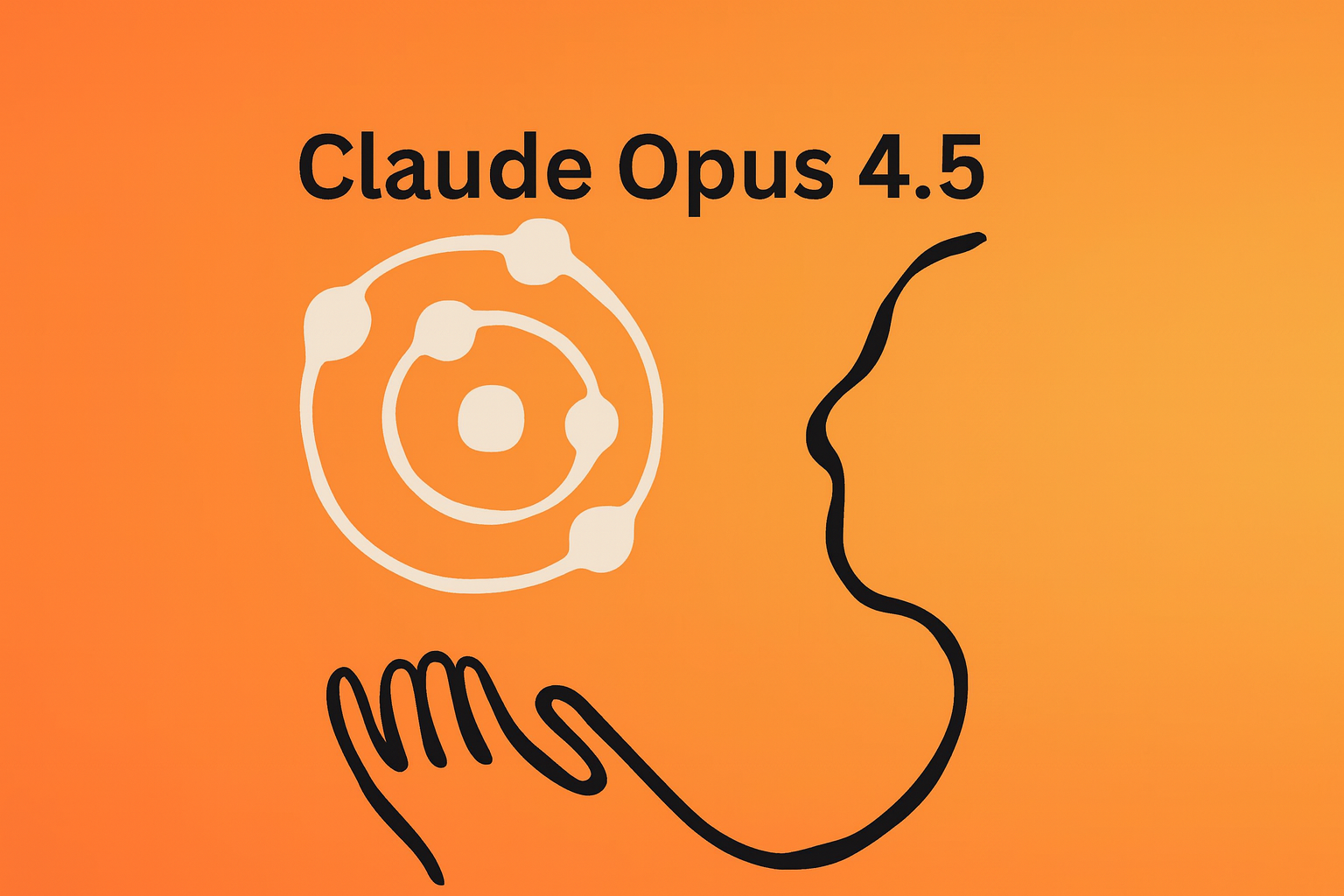
Claude Opus is Anthropic’s highest-end AI model, designed for users who need the most advanced reasoning, coding support, and long-context performance the Claude ecosystem can provide. While lighter models focus on speed or affordability, Opus is purpose-built for the hardest problems—research analysis, multi-step planning, enterprise workflows, and complex software engineering. With the expected release of Opus 4.5, the model is poised to take another substantive step forward.
What Claude Opus Does for Users
Claude Opus serves as the flagship “deep-thinking” model in the Claude lineup. It is engineered for work that demands reliable, extended reasoning across multiple steps. Users turn to Opus when they need an AI partner capable of analyzing large documents, orchestrating long workflows, or reasoning through complex problems that require consistent logic over hundreds or thousands of tokens.
Another major advantage of Opus is its capability with large and complicated codebases. It can read, refactor, and troubleshoot multi-file projects, making it valuable for software development teams. Its extended context handling and structured reasoning enable it to understand how changes in one part of a codebase will affect other parts, something smaller models struggle with.
Beyond raw intelligence, Opus is built for practical integration. Its design emphasizes stable tool use, file handling, and agent-style task execution. For users building automated workflows—such as coding agents, research assistants, or internal enterprise systems—Opus provides the reliability and interpretability required for higher-stakes work. It also incorporates strong safety and robustness features, making it suitable for businesses that need models with predictable behavior and compliance-friendly guardrails.
The Benefits Users Experience
Users who rely on Opus typically experience three main benefits. First is heightened reasoning quality: Opus is known for its ability to stay consistent across long chains of logic, making it particularly strong for analysis, planning, and complex instruction following. Second is stronger performance in coding and technical tasks, especially when the work spans large projects or requires precise refactoring and debugging. Third is workflow stability: Opus tends to behave predictably in multi-step processes, tool integrations, and file-based operations, which is essential for enterprise automation and agent systems.
While Opus comes with higher costs compared to mid-tier models, these benefits make it the preferred choice for users working on demanding, high-value tasks where accuracy, depth, or system reliability outweigh raw token cost.
What’s New and Expected in Claude Opus 4.5
Opus 4.5—sometimes referenced by its internal codename—has appeared in technical logs and testing environments, signaling that Anthropic is preparing the next iteration of its premier model. Though not all details are officially published, the current information paints a clear picture of the upgrade.
Opus 4.5 is expected to improve multi-step reasoning and “extended thinking,” allowing the model to handle even longer and more complex workflows with fewer errors. This includes better internal planning, more coherent strategies, and stronger performance when coordinating multi-stage tasks.
Software engineering capabilities are also set to advance. The new version is anticipated to deliver more accurate code generation, more reliable cross-file reasoning, and greater stability when handling refactor operations in very large repositories. This aligns with Anthropic’s recent focus on improving engineering-oriented performance across the Claude family.
Tool use and agent orchestration are another major area of enhancement. Opus 4.5 is expected to manage tool calls more reliably, break tasks into structured subtasks more intelligently, and support more sophisticated automated workflows. These improvements directly benefit users building AI-powered systems that must operate consistently and autonomously.
The update may also include expanded multimodal capabilities, stronger document and image understanding, and enhanced safeguards. Enterprise-grade safety, consistency, and explainability—areas Anthropic has invested heavily in—are likely to be refined further in Opus 4.5.
From a pricing standpoint, Opus 4.5 is expected to remain within the same cost tier as the current Opus versions, continuing to position itself as a high-capability model intended for mission-critical work rather than casual use.
What Users Should Expect
For users who already rely on Opus for large-scale coding, deep research, complex reasoning, or advanced agent workflows, version 4.5 is positioned as a meaningful improvement rather than a minor iteration. Increased reliability, deeper reasoning capability, and smoother integration with tools and agents should make it even more useful for long-horizon tasks.
For lighter use cases, however, Opus may remain more power than necessary—meaning many users will continue to find Sonnet or smaller models sufficient.
If you’d like, I can turn this into a polished blog-ready article, a shorter marketing-style summary, or a more technical analysis.
-

 AI Model2 months ago
AI Model2 months agoHow to Use Sora 2: The Complete Guide to Text‑to‑Video Magic
-

 AI Model4 months ago
AI Model4 months agoTutorial: How to Enable and Use ChatGPT’s New Agent Functionality and Create Reusable Prompts
-

 AI Model5 months ago
AI Model5 months agoComplete Guide to AI Image Generation Using DALL·E 3
-

 AI Model5 months ago
AI Model5 months agoMastering Visual Storytelling with DALL·E 3: A Professional Guide to Advanced Image Generation
-

 AI Model3 months ago
AI Model3 months agoTutorial: Mastering Painting Images with Grok Imagine
-

 News2 months ago
News2 months agoOpenAI’s Bold Bet: A TikTok‑Style App with Sora 2 at Its Core
-

 AI Model7 months ago
AI Model7 months agoGrok: DeepSearch vs. Think Mode – When to Use Each
-

 Tutorial2 months ago
Tutorial2 months agoFrom Assistant to Agent: How to Use ChatGPT Agent Mode, Step by Step
